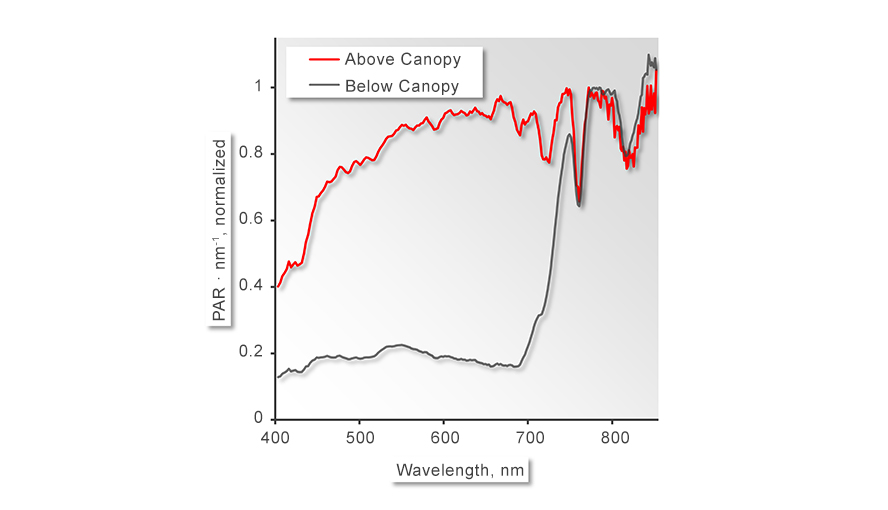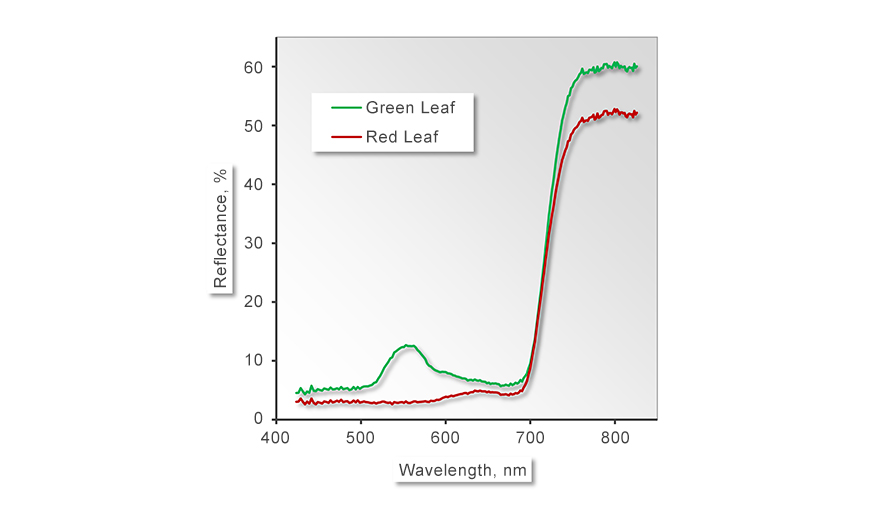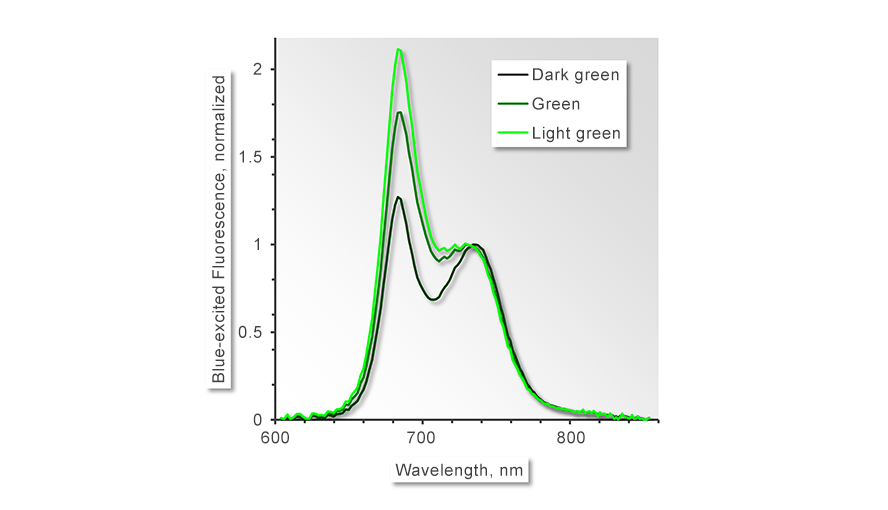DIVING-PAM-II
Version:
Underwater Fluorometer with Miniature Spectrometer
Photosynthesis under Extreme Conditions (Heron Island, Great Barrier Reef, Australia)
The DIVING-PAM-II was applied for the very first in situ measurements of spectral reflectance and photosynthetic activity of cyanobacterial biofilms colonizing the intertidal beachrock platform of Heron Island, Great Barrier Reef.
This is an extreme environment undergoing large changes in temperature (28->50 degrees Celsius), light exposure (high UV and PAR levels of > 2000 µmol photons m-2 s-1), salinity (freshwater to >50 ppt salinity) and water status (dry to fully submersed) on a daily basis, as driven by the local tides on Heron Island.
The spectrometer of the DIVING PAMII enabled us to study the distribution of different cyanobacteria via measurements of reflectance spectra on different locations on the beachrock in combination with measurements of light acclimation of the beachrock cyanobacteria under different tidal conditions, which are impossible to simulate in the lab.
Our spectral reflectance measurements showed that the beachrock harbors a dense cyanobacterial biofilm community, which is shielded against UV and bright sunlight via high levels of protective sunscreens (scytonemin and carotenoids). This enables efficient photosynthesis even under extreme conditions, as quantified via in situ measurements of rapid light curves on the beachrock platform.
Professor Michael Kuhl, University of Copenhagen

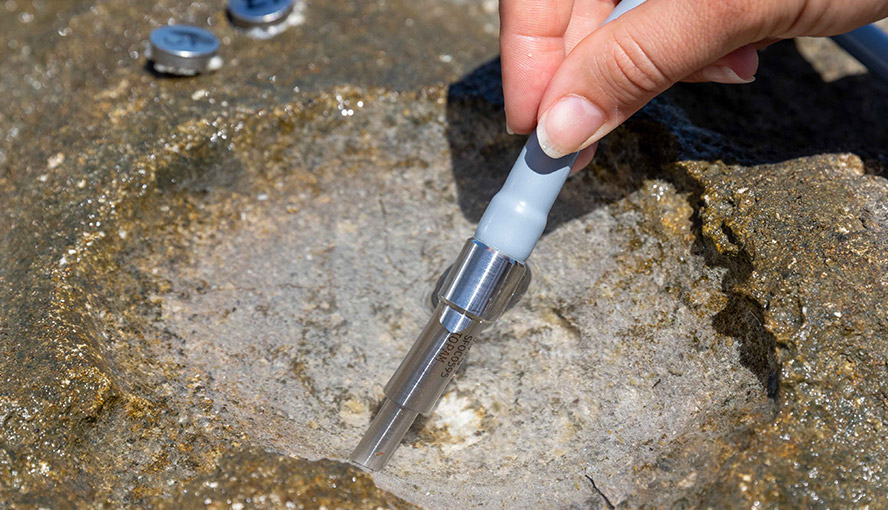
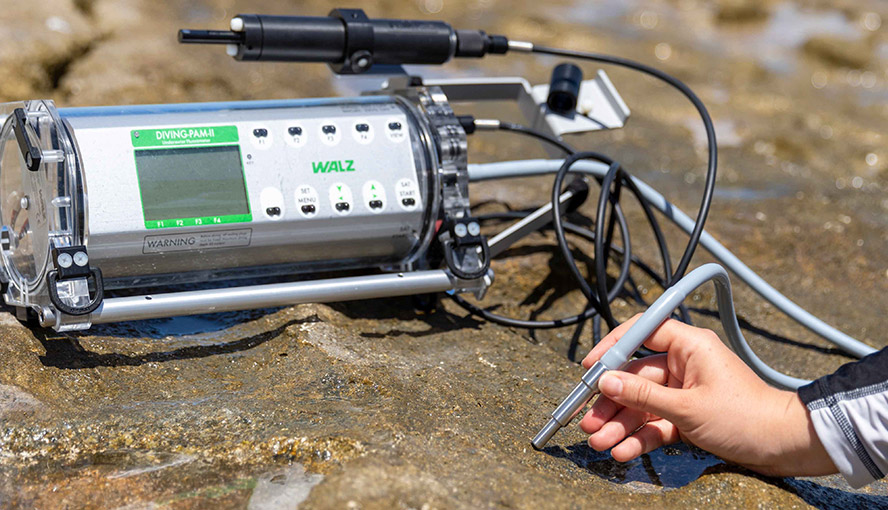
Assessing Photosynthesis of Marine Macro Algea
Kongsfjord, Spitsbergen Island
A prototype of the DIVING-PAM was tested on the Spitsbergen Island under arctic conditions. The chlorophyll fluorometer was used in the Kongsfjord and exposed to water depths down to 30 m, at a temperature of 0 °C. Despite of these somewhat unusual conditions, it functioned without any problems.
For the first time, the saturation-pulse method was applied with simultaneous light measurement for an assessment of the effective quantum yield of photosystem II (ΔF/Fm') in macroalgae in their natural underwater habitat. The aspect of quantum yield regulation as a function of the light adaptation state at low temperatures was a central subject of this investigation.
The brown alga Alaria esculenta was chosen as object of investigation. In Kongsfjord, this alga can reach a height of up to 5 m. This plant takes root in the rocky sea bed and is characterized by an upright stalk, with the top "leaf-region" reaching the water surface.
Measurements proved a clear correlation between the photosynthetic performance of individual "leaf-regions" and their distance from the surface. The most important differences (by about a factor of 3) were measured in the area between the surface (lowest quantum yield) and a depth of 60 cm, where almost maximum quantum yield was observed.
As expected, the relative suppression of photosynthesis reached its highest level at the time of the most intensive solar radiation at noon (the so-called midday depression). This phenomenon seems to reflect an important protection mechanism against damaging effects of excess light energy (heat dissipation). This is especially important when the enzymatic dark reactions are slowed down at low temperatures.
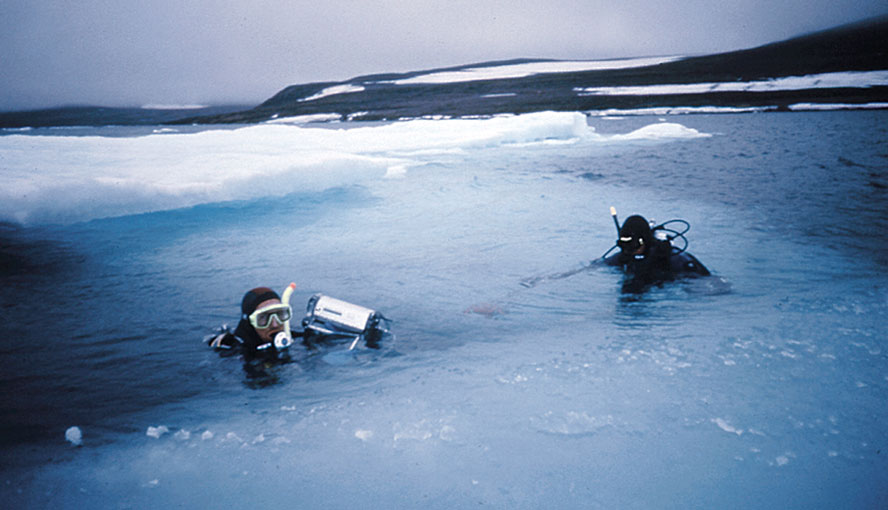
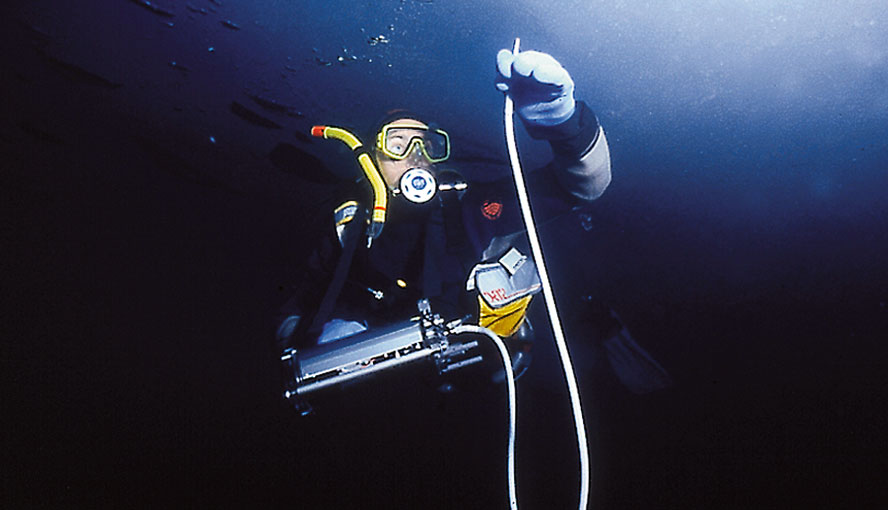
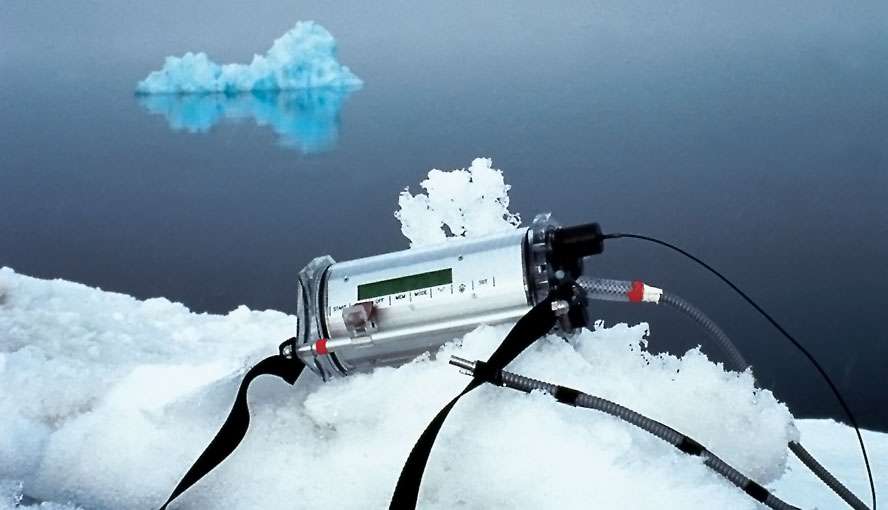
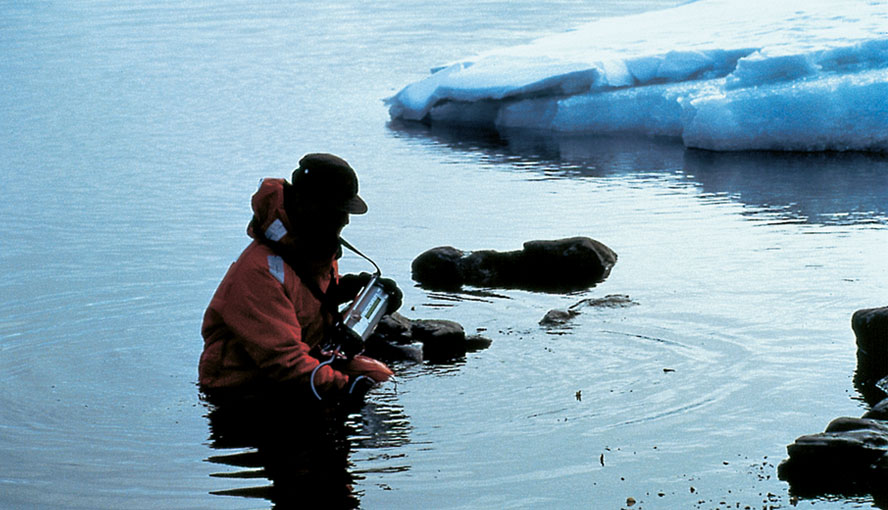
Southern Atlantic Coast of Spain
Similar underwater measurements were made with the DIVING-PAM at the southern Atlantic coast of Spain. The relative electron transport rate (ΔF/Fm' x PAR) of Halopteris scoparia, a brown alga of only 3 cm height growing in the uppermost coastal zone, was determined at different times of the day, under natural conditions of solar radiation.
Even the algae growing near the water surface did not show any symptoms of an increased dissipation of excess light energy. Contrary to the arctic algae, no significant saturation of electron transport rate was observed under high irradiance.
This leads to the conclusion that Halopteris was not exposed to any light stress during the natural course of the day. Consequently, it was able to make optimal use of the available solar energy at any time. This is typical of a plant acclimated to high light conditions. In this context, a sufficiently high ambient temperature seems to be an important precondition for acclimation of the dark reactions to the high rates of quantum absorption.
Prof. Dr. Dieter Hanelt, Universität Hamburg, Hamburg, Germany
Measuring Spectra of PAR, Reflectance and Fluorescence
The Miniature Spectrometer MINI-SPEC is a compact and robust outdoor instrument for gathering spectral information of the light environment and the sample.
Figures 1 to 4 illustrate types and signal quality of PAR spectra as well as of reflectance and fluorescence spectra.

